SVAS Imaging Gallery
- - -
Charles Jones
Charles uses a Celestron C6 and a Mallencam Video Camera.
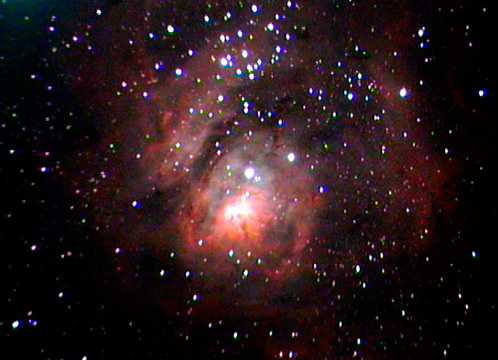
Lagoon Nebula
Taken on 08/15/15, this is a single 37 sec exp using a Mallencam Video Camera.
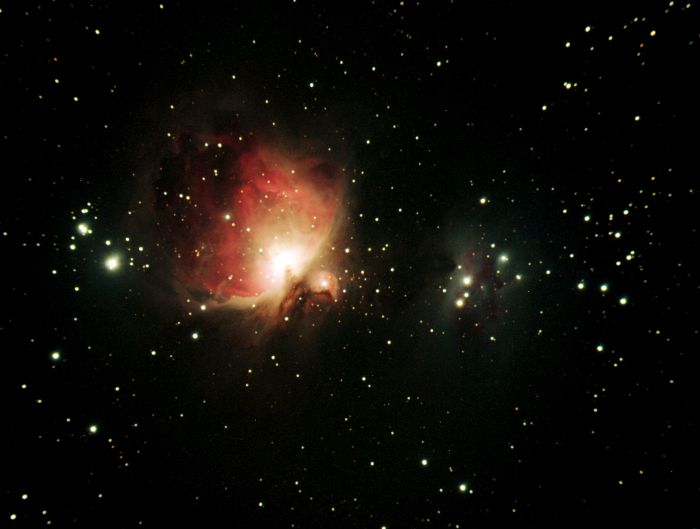
The Orion Nebula (M42) and Running Man
Telescope: Explore Scientific ED80 CF refractor.
ZWO ASI 1600 camera,
RGB filters: Red 25x25s, Green 20x15s, Blue 20x15s.
Celestron AVX mount.
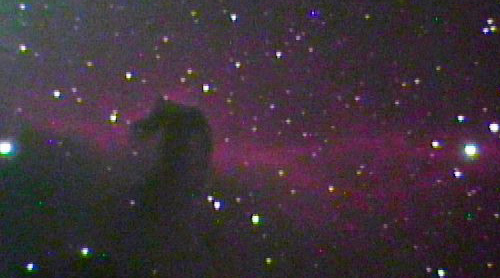
Horsehead Nebula
Taken on 10/14/15 at 2 am, this is a single 2 min exp using a Mallencam Video Camera.
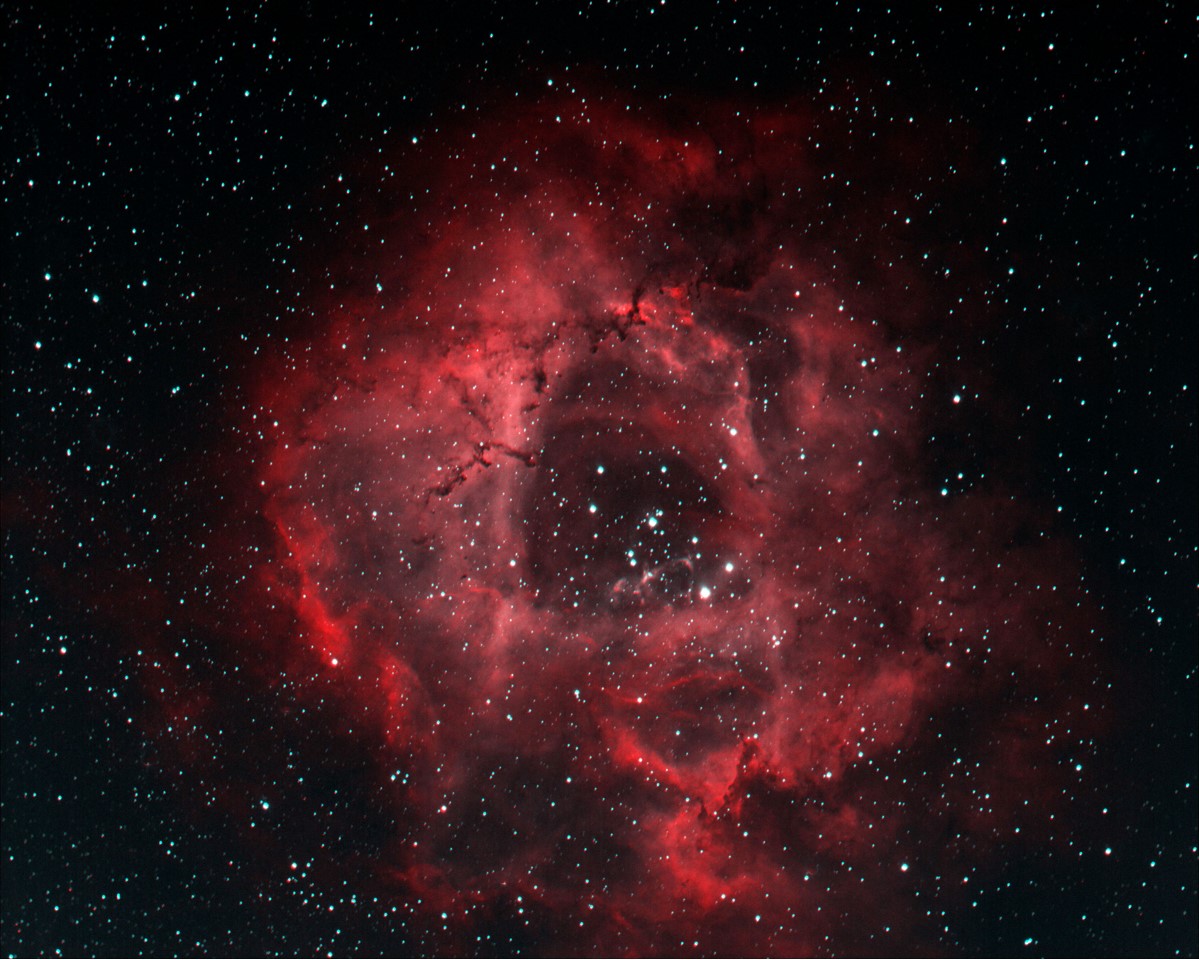
The Rosette Nebula, NGC 2244
Scope: Explore Scientific ED 80 CF Triplet Refractor
Camera: Atik One 9
Mount: Skywacher EQ6-R Pro
Total exposure time: just under 4 hours
Filters: HA-OIII-SII
Adam Phillips
Adam uses a Stellarvue SV80 and a QSI 6120 CCD Camera
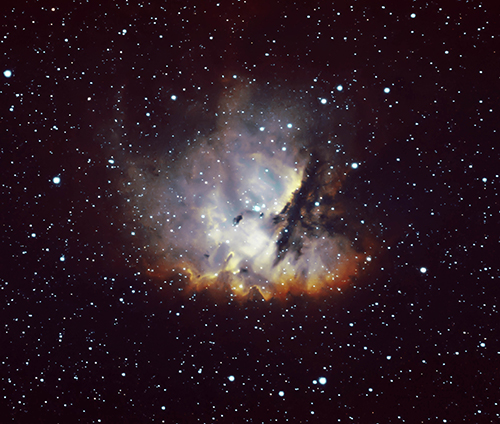
NGC 281 - The Pacman Nebula
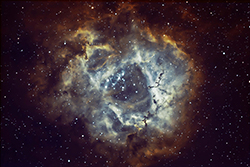
NGC 2244 - The Rosette Nebula
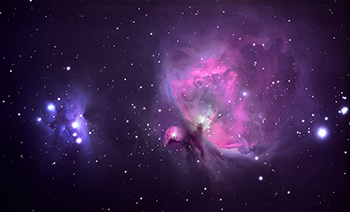
M42 - The Orion Nebula
Gary Shuluk
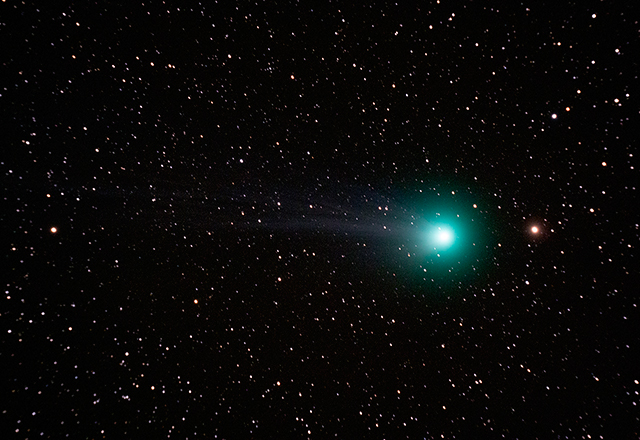
Comet c/2014 Lovejoy
240 sec using HGO's 80mm Stellarvue and a Canon 450 DSLR
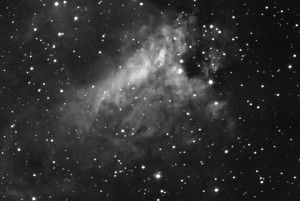
M17 - Omega Nebula
(the Swan)
This is a section of m17 The Omega Nebula taken with the 16″RC at HGO on 8/16/14. I shot a total of (20) 2 minute shots with a Canon 450D DSLR. I used my SBIG STV
Guide Camera with the Stellarvue 80mm as a guide scope. I processed this image as a monochrome shot, and did not use any dark frame subtraction. Now that this scope is fully automated, the imaging possibilities with a basic
camera are unlimited. I’m looking forward to what other members will come up with. I’d like to thank Lonnie and Perry for all the work they’ve done in turning this old 16″ RC into a high quality goto scope!
Chuck Real, Video Astronomy
If you were to mention the words video astronomy to someone they would probably ask “what’s moving up there….are you trying to catch a shooting star?” that’s probably the most common misconception of what video astronomy is. The second misconception among unaware amateur astronomers, is that it is just another form of astro-imaging; taking beautiful portraits of astronomical objects. Both are wrong…video astronomy is a relatively new tool used to enhance observing rather than astro-photography. It takes advantage of modern video technology to greatly enhance what is seen through a telescope beyond one’s wildest imagination. It can do that in about the same time it would take to bring a target object into sharp focus through the eyepiece, a process appropriately referred to as “near-real time observing.” The magic comes from the rapid multitude of images that is characteristic of video that are generated by the highly sensitive sensors used in nighttime surveillance cameras. The image stream is summed (integrated), which allows the accumulation of light from faint objects much like a long exposure from conventional camera, only much faster.
For the more elderly enthusiast, remember those wonderful black and white pictures of astronomical objects in books of the 1950’s and 60’s taken by large observatories? With this new video technology, amateur astronomers are now able to gaze upon nearly equivalent images streaming from their own telescopes…in full color! Below are a few screen shots taken of such images taken by an astro-video camera through a vintage 1980’s 8” Celestron SCT. Be forewarned again that these screenshots are not intended to compete with high-resolution portraits, but they are remarkable because they show more than can be seen by the human eye through an eyepiece…and did so in less than a minute.
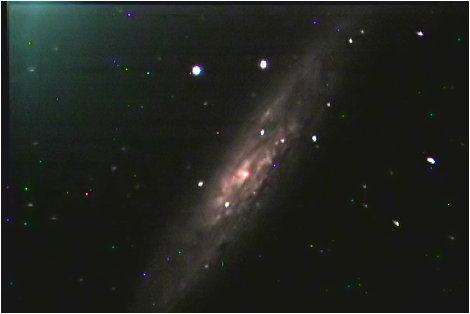
NGC 253 Sculptor Galaxy
The image was captured during the July 2014 Star-B-Q at the Blue Canyon HGO site in the Sierra Nevada Mountains. It was produced by 40 sec of integrated video taken through a
1980’s vintage C8 SCT.
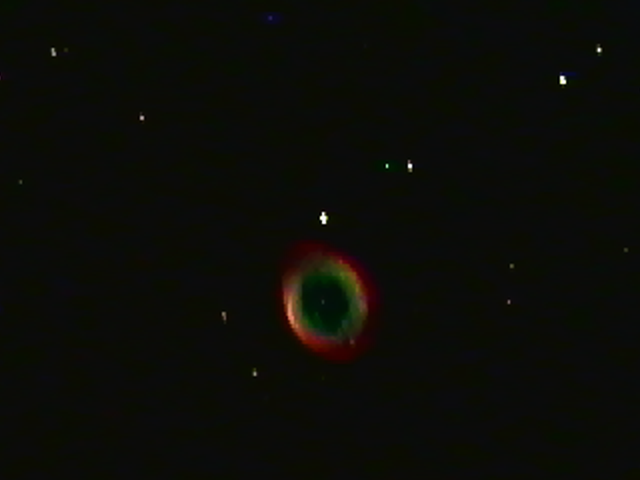
M57 Ring Nebula
The M57, Ring Nebul,a was designated Object of the Month at our September 21, 2019 SVAS General Meeting,. The image shown was captured the following Saturday evening, using a Celestron 8 SCT and Mallincam Xterminator astro-video camera in suburban Orangevale, and resulted from the arithmetic sum of two 10 second exposures. Note the tiny central white dwarf is clearly visible….the remnant of a dying low-mass star that has spent its hydrogen/helium fuel and has expelled its outer shell of ionized gas. The red is ionized hydrogen and the blue-green is doubly ionized oxygen. The dwarf is thought to be about the size of the Earth with a mass slightly greater than our Sun!
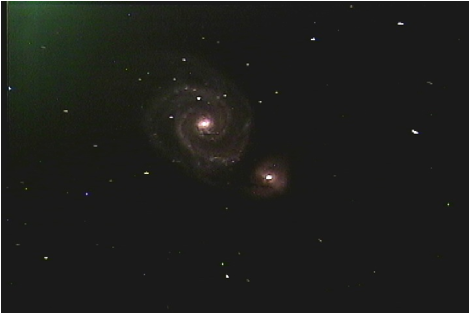
M51 Whirlpool Galaxy
This image was taken in Modac County during the 2014 Golden State Star Party. It resulted from 45 sec of integrated video taken through a 1980’s vintage C8 SCT.
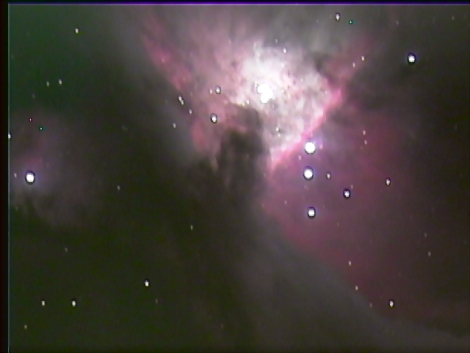
M42 Orion Nebula
This photo was taken on November 8 in Orangevale, CA using a Mallincam Xterminator II astro-video camera. The image was captured using on-the-fly high dynamic range stacking, consisting of 3 exposures for 6s, 9s, and 12s respectively for a total of 27 seconds. The image clearly reveals the dark nebula that forms the so-called “fishes mouth” reentrant in M42 and some of the bright young stars that form the trapezium.
Because this is a relatively new way to enjoy astronomy, there is much to learn in this rapidly developing field. To aid those interested in learning more, SVAS has created a new webpage dedicated to the exciting new field of video astronomy. More in-depth articles on the technology and observing methods will be covered in a series of articles published in the SVAS Observer.